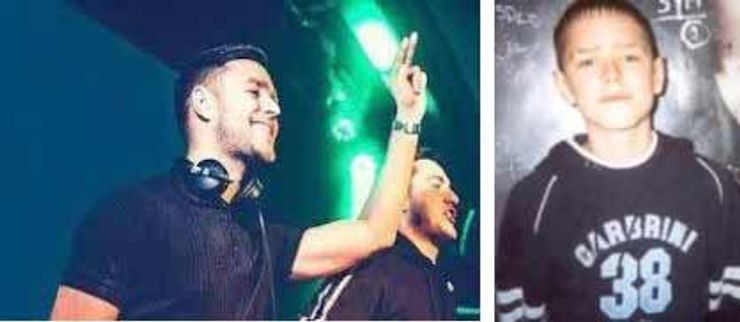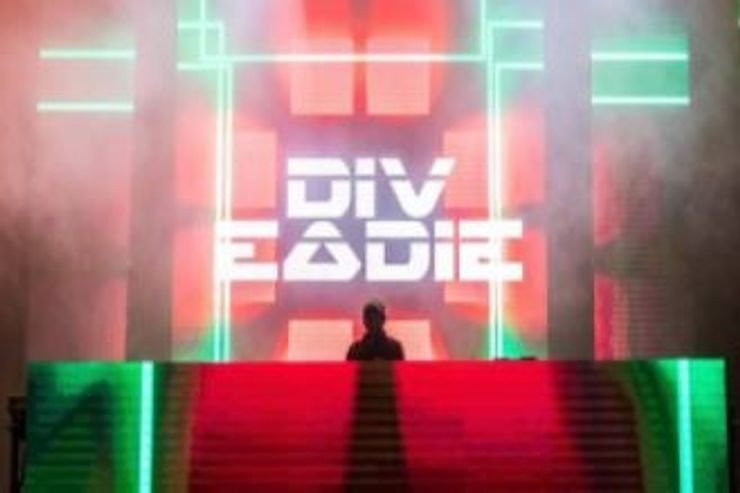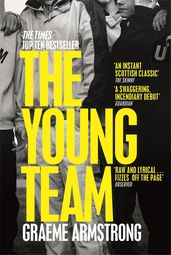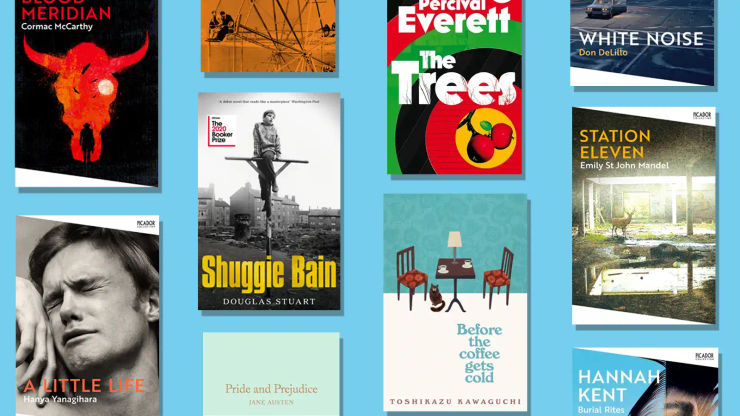‘We created something unique which offered light among the shade’: Graeme Armstrong on Glasgow’s PCDJ music revolution
Graeme Armstrong, author of The Young Team, reminisces about the rave subculture that electrified his youth, and remembers the violence of the gang culture which was intrinsically linked with the music.

Early noughties Glasgow saw the emergence of a new dance music subculture – PCDJ. Named for the cheap computer software the music was made on, this was a new sound emerging from Glasgow’s deprived housing schemes, with all the energy of 'gabba' and the euphoric bliss of 'trance'. Graeme Armstrong, author of The Young Team, grew up immersed in the PCDJ scene, but also experienced first hand the violent gang culture with which it was intertwined. Graeme’s debut novel, The Young Team, is inspired by his own experiences. Here, he recalls the excitement of discovering music which had emerged from, and reflected, the community he was a part of, and remembers the violence of a scene where DJs and gang members were often one and the same. Graeme also selects his essential PCDJ DJs and tracks.
2006. I’m sitting with the older troops in a Ford Mondeo. They pop a disk behind the face of the Pioneer CD player, illuminated blue against the old-fashioned green LCD display. A new sound flows out the old, battered door speakers. Tiesto, Adagio for Strings. They’re smoking a joint and nodding along. ‘Dae yi like Tiesto?’ Fatcat asks me. A shrug n laugh back, ‘Dunno, mate. Never heard of him.’ My big pals look bemused. ‘He’s the most famous DJ in the world!’ Add said, Fatcat agreed. ‘Yi cannae listen tae Gary McF furever!’ they told me. ‘How no?’ I asked back. I can’t remember the answer. They were teaching me about the violence of inevitability. You had to grow up sometime and surrender subculture to status-quo. The wildness of youth had to be tamed and evolve with this so-called growing up. They were going to clubs and pubs, instead of street corners and mad gaffs. The big hall raves of Fantazia, Fantasylands and Coloursfest were just around the corner. Times were changing . . .
2003. Broadband internet was just becoming commonplace. I couldn’t even use a keyboard. Within a few months of getting a PC, I was touch-typing using both hands, instead of a hovering finger. One of the funniest lines I would hear came from my mate’s pal who came from one of Glasgow’s most deprived schemes. He seen me typing rapidly and asked, in all seriousness, are you some kinda mad hacker? 24/7 chat on MSN messenger had made us all whizz-kids. Bebo and Youtube would follow soon. The digital coup de tête had begun. Alongside the social media phenomenon, the shift to MP3 and digital storage would revolutionise how we consumed music . . . same as the vanquishing of cassette by compact disk. Now, it was CDs’ days which were numbered. I was amazed that you could plug this new iPod Shuffle thing into a USB port, load it with literally hundreds of songs and you couldn’t even scratch them. Websites for downloading tunes began to be as popular as social networks: Limewire, Ares, The Pirate Bay . . . all totally illegal, obviously. You wouldn’t steal a car etc. We would be largely innocent of this piracy. My generation had started to make our own tunes. We were mostly oblivious to the charts, bar a few classics.
‘My generation had started to make our own tunes. We were mostly oblivious to the charts, bar a few classics.’
We were sitting on my best mate’s living room PC. He clicked through a roughly made Tripod.com website, hit a link and handed me an earphone. ‘Listen. Tae. This.’ It was DJ Rankin, Think of You 2003. A roughly made remix of DHT’s classic, True Love. Only its BPM was ramped way up and for the first time, the tuned-up voice said, ‘DJ Rankin in the mix motherf*cker!’ Pupils dilate. Heart rate increases. Serotonin and dopamine start to flow into brain chemistry. ‘Mate, that’s actual class! Who even is that?’ My pal laughed, ‘He’s fae Falkirk! DJs at Universe n aw this!’ Universe was a notorious unders’ disco in Coatbridge. The final nail in its coffin was a pitched battle between an Airdrie coalition of the Greengairs Young Team, Young Crazzy [double z for justified emphasis] Bush and Winhaw Yobboz who joined forces with Coatbridge’s Toonheed PYTO to fight the Young Dykes of Sikeside and the Albion Street Fleeto. Many were injured over weeks of fighting. Airdrie troops ambushed the opposing YTs with varied weapons including samurai swords and it culminated with a bouncer being hit by a petrol bomb. Unders clubs never lasted in Airdrie or Coatbridge. Most of this music was played from MP3 players and mobile phones on the streets.
The Noughties weren’t all sunshine and rainbows in the west of Scotland. PCDJ culture and gang culture were intrinsically linked. The Young Team mentions the heritage of some PCDJ legends when Azzy and the troops are on the build-up to the first rave of the novel, Fantazia at the Braehead arena. It was a fundamental part of these real-life experiences. Due to DJ’s young team affiliations, conflicts would often spill into diss tracks set over techno beats. A fight at the Time Capsule Leisure Centre in Coatbridge between the LL TOI [Langloan Toi] and the AYT [Airdrie Young Team] resulted in no less than 5 diss tracks being made, recounting the battle and laying into each other in a rap battle style assault, full of hilarious Glesga patter, personal insults and (often) empty threats.
The LL TOI struck first . . .
Don’t be silly, ya f*ckin fools,
Yees thought yees wur mad at the swimming pool!
Took yees outside,
Cos yees thought yees were wide,
Then we showed yees how tae fight! …
Greetin like a little boy,
Battered aff the Lang el Toi!
The AYT responded . . .
LL TOI? Don’t make me laugh . . .
Come back when yeev f*ckin hud a bath!
Come up here n we’ll rip yees tae shreds.
Send yees hame tae yer f*ckin beds . . .
A Y f*ckin T.
Some strong words and equally strong rhyming couplets. The alpha-pack machismo mentality manifested in these songs. Perhaps unsurprisingly. There’s no escaping it, these were violent days. The social reality of young men existing within these communities was reflected in our music. PCDJing became a valve for otherwise marginalised voices with no filtration or governance from anyone but the listening masses of youths who consumed it. No money exchanged hands. It was a totally free medium. Prestige rather than profit was at stake. Stars were born and became legends.
‘There’s no escaping it, these were violent days. The social reality of young men existing within these communities was reflected in our music. PCDJing became a valve for otherwise marginalised voices with no filtration or governance from anyone but the listening masses of youths who consumed it.’
This golden era of PCDJing started with DJ Rankin. He was the first household name, after whom many followed and emulated. I doubt back then he realised he had created a cultural phenomenon which would spread throughout the entirety of lowland Scotland. Its epicentre was undoubtedly Glasgow. The majority of these boys were neds from housing schemes, with no formal training in sound engineering. The knowledge was passed from person to person, improving with time. The skill was selecting backing track ‘originals’ and cut acapella sections then smoothly beatmatching them on PC software, usually Sony Acid Pro. At the beginning, it was roughly added, out of beat, but still managed to blow up due to its cultural relevance. Most things happened elsewhere, in other places far removed from our realities. This was happening on our doorstep. Airdrie and Coatbridge added no less than ten of the biggest hitters to the list. Our gang culture fed many well-known diss tracks and our young teams provided crazy characters who possessed both skill in mixing tunes and explosive patter.
‘Our gang culture fed many well-known diss tracks and our young teams provided crazy characters who possessed both skill in mixing tunes and explosive patter.’
There was no set formula to what megamixing should involve. Rankin’s were basic at the outset, using only one or two acapellas across the original backing track. E.g., DJ Rankin, Raise Your Hands Up Children. Young pretender to the Scottish PCDJ throne, Gary McF, would soon become rightful heir. He would take the next generation’s technical skill to another level. The culture was continually evolving. By the end, DJs were ‘ultimixing’ instead of using lines or phrases, single words cut from other acapellas were combined across the high BPM beat in sequence to create a sense of frantic sound, a kind of continuous audio motion. E.g., Gary McF, I Wanna be a Star. Lots of these techniques were mutated forms of specific sound production terminology and were used colloquially to suit. A ‘megamix’ in the true sense is a blending of different tracks creating a medley. The majority of what we were listening to were actually ‘mash-ups’ – where multiple vocal segments were added to the instrumental backing of another. Terms like ‘beat-matching’ are accurate and recognised musical theory.
The result was PCDJ tacks sounding much faster than your average dance genre. The ‘originals’ were largely discovered from Makina, Eurodance and Hardcore genres. I learned with horror that Stuck on You wasn’t a DJ Rankin original when my mum started singing along and told me it was actually a Lionel Ritchie song. We were making and experiencing our own musical history, as if we were first and not part of an evolutionary sequence of cultural and musical Darwinism. We created something unique which offered light among the shade of those turbulent days and the most violent period of gang culture Scotland had ever seen. The music was full of colour and made us forget temporarily the surrounding dull hues of social degradation. The nostalgia levels surpass that of the mainstream consumption. The former industrial heartlands of Scotland didn’t have much – low opportunity, low prospects and low outcomes. This was our moment. We remember gladly those gallant pioneers . . .
Rankin. Pulse. Nogitaclue. Gillies. Zitkus. Fatcat. Krissy. Paul. Gary McF. Curtai. Div E. Cammy. Badboy. Steven Logan. Toughy. Supreme. Blitzed. Cambo. Gary Haitch. Jambo. Darn R. Kickback. Crofton. Blades. Napper. Cheesy. Paddy McPhie. Webby. Aldo O’Drisco. Flea. Disco Dave. Roberto Monti. Knuckles. Aldo O’Donno. Colin Niven. McD. Neil Jackson. Gav F*ckin Bee. Easton. Mac. Housty. Eckie. Jordan Fyfe. Ross Kay. Team Techo. Mix Mysters. Healfy Rapid. Team Effect. The Masters. Ballistic Beats.
The list is almost endless . . .
Graeme Armstrong’s top five PCDJ DJs

DJ Rankin. The Genesis. The first and, arguably, best. A prolific PCDJ who graduated from bedroom computer and decks to the unders’ and club scene. Rankin has gone on to inspire a whole culture who followed behind him and has amassed tens of thousands of online followers and millions of YouTube views of his most classic tracks. He continues to be a successful DJ and producer and features in Paul Zitkus’ IAAR club nights.
Notable track: DJ Rankin, I am a Raver. There was never any doubt.
DJ Pulse. The Forgotten Hero. Pulse was synonymous with Rankin in the early days. He was one of the originals. Pulse still continues to produce and play club nights alongside legends like Scott Brown. He featured in the early I am a Raver events. His latest track was featured on Glasgow’s famous GBX radio show on Clyde 1 this festive period.
Notable track: DJ Pulse, Dangerous. One of the best.

Gary McF. The Future. Arguably the most defining presence of the ‘Second Age of the PCDJ’. Absolutely prolific dedication to this genre. Made many significant classics, diss tracks and farcical offerings alike. Gary continues to create music and released a CD last year featuring some of his best-known tracks with a modern reimagining. Gringo boy, a big Rangers fan and a keystone of the IAAR nights. Undoubtedly a PCDJ legend. If Rankin is an ace, Gary McF is a king.
Notable track: Gary McF. Ah Ahh Ahhh. Goes without saying really.

DJ Zitkus. The Entrepreneur. Glasgow’s answer to Dr Dre. The brainchild behind and owner of I Am A Raver events company which started playing local venues and has gone on to host international events in Ibiza, Magaluf and many more cities in the UK and abroad. Paul Zitkus recognised and professionalised the potential of the creative energy of this culture. In doing so, he has preserved it for new generations to enjoy. The group have played hundreds of venues and includes stalwarts such as Zitkus himself, Rankin, Cammy, Badboy, Dexi and Gary McF.
Notable track: DJ Zitkus. Bad Bhoy. A Friday Feeling classic.

Div E (Eadie) The Star. From early PCDJ fame, Div has gone on to become an international success, playing big hall rave events like Fantazia and Coloursfest and across the world among line-ups of global superstars such as Martin Garrix, NERVO, Dimitri Vegas & Like Mike and many more. Div’s track Never Left My Sight was premiered by world No.1 Hardwell and was later released on his label Revealed Recordings. He continues to make music and gain support from some of the biggest names in the industry.
Notable track: DJ Div E. April Megamix fur Deko
The Young Team
by Graeme Armstrong
In the forgotten heartlands of Scotland, your mates, your young team, they're everything you've got. At fourteen Azzy Williams is a rising star. At seventeen he's out of control. And by twenty-one he'd like to leave it all behind. But finding a way out isn't easy.
The Young Team is an energetic novel, full of the loyalty, laughs and violence of life on the streets. This powerful story about the realities of life for young people in Britain today is inspired by the author's own experiences of teenage life.
Photo credit: ©Robin Farquhar-Thomson



